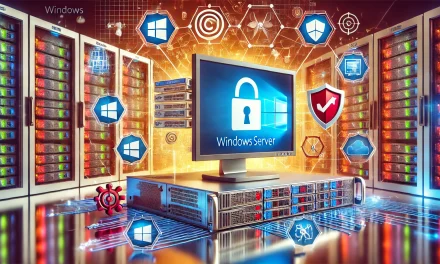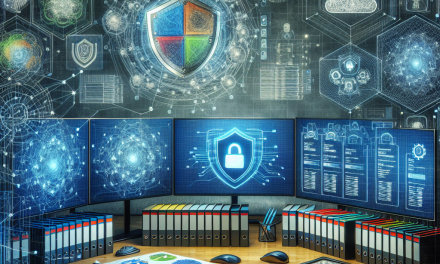In an increasingly digital world, the security of organizational infrastructure is paramount. Microsoft Windows Server has long been a cornerstone of enterprise IT environments, powering applications, services, and internal infrastructures. However, with the rising tide of cyber threats, the need to secure Windows Server installations has never been more critical. Here are essential best practices that can help fortify your Windows Server environment.
1. Regular Updates and Patching
One of the most fundamental steps to secure your Windows Server is to ensure that it is always up-to-date. Microsoft regularly releases patches and updates to address vulnerabilities in the operating system. Implementing a robust patch management strategy helps mitigate the risk of known exploits. Scheduling regular maintenance windows allows system administrators to apply updates efficiently while minimizing downtime.
2. Implementing Role-Based Access Control (RBAC)
Access control is crucial in minimizing the attack surface of any server. Role-Based Access Control aids in managing who can access specific data and applications on the server. By assigning users only the permissions necessary for their roles, you diminish the potential for unauthorized access and data breaches. Ensure that administrative privileges are restricted to a few trusted individuals and regularly reviewed.
3. Enable Windows Firewall and Advanced Security Settings
The built-in Windows Firewall is a powerful tool that can help protect your server from unauthorized access. Make sure it is configured and enabled. Additionally, utilize Windows Firewall with Advanced Security to define inbound and outbound rules, set up connection security rules, and apply IPsec for encrypting network communications between servers.
4. Secure Remote Access
Many organizations require remote access to their Windows Server environments. It is essential to secure this access to prevent unauthorized entry. Use technologies such as VPNs (Virtual Private Networks) for secure connections and enforce strong authentication methods, such as two-factor authentication (2FA), to add an extra layer of security. Additionally, consider limiting remote access by IP address to reduce exposure.
5. Enable and Configure Audit Logging
Monitoring and logging are critical components of a strong security posture. Enable audit logging on your Windows Server to track user activities and configuration changes. This information is invaluable for identifying potential threats, investigating incidents, and maintaining compliance with industry regulations. Ensure that logs are sent to a centralized location for easier access and analysis.
6. Implement Encryption
Data encryption is vital, especially for sensitive information stored on or transmitted from your Windows Server. Use BitLocker to encrypt data at rest on your server’s hard drives. For data in transit, implement SSL/TLS for web applications and other services, ensuring that sensitive information is protected from eavesdropping and man-in-the-middle attacks.
7. Regular Backup and Disaster Recovery Plans
No security strategy is complete without a robust backup and disaster recovery plan. Schedule regular backups of your Windows Server data and system configurations. Ensure that backups are stored in a secure, offsite location and that you regularly test recovery procedures to ensure they are effective. This preparation not only protects against data loss but also against ransomware attacks.
8. Limit Use of Legacy Protocols
Older protocols, such as SMBv1, often have known vulnerabilities that can be exploited by attackers. Disable unnecessary legacy protocols and replace them with more secure alternatives. Continuously review your server configurations for outdated or insecure protocols and make updates as necessary.
9. Install Antivirus and Anti-malware Solutions
Implementing reputable antivirus and anti-malware software is critical in protecting your Windows Server from malicious software. Ensure that your chosen security solution is capable of real-time scanning and regularly updated to recognize the latest threats. Configure automatic scans and regularly review quarantine and logs to stay informed of potential threats.
10. Educate and Train Staff
An organization’s security relies not only on technology but also on its people. Regularly educate and train staff about security best practices, social engineering tactics, and the importance of reporting suspicious activities. Encourage a culture of security awareness where employees feel empowered to uphold best practices.
Conclusion
Securing your Windows Server environment is an ongoing process that requires diligence, awareness, and proactive measures. By incorporating these essential security best practices, organizations can significantly reduce the risk of cyber threats and protect their critical infrastructure. Remember, a comprehensive security strategy combines technology, protocols, and human factors for maximum efficacy. With the right approach, you can successfully fortify your infrastructure against an array of potential threats.




